Natural Born Sons & Daughters
Seventeen of the officers and gentlemen on Australia’s First Fleet had illegitimate children with convict women. This newsletter explores attitudes to class in early colonial Australia by studying these men and women, and their relationships with their children.
Gary L. Sturgess
2/28/202519 min read
Class in a Convict Society
Margaret Dawson was sent to New South Wales in 1787 for stealing a substantial amount of money and jewellery and a few items of clothing from the middle-class house where she had been in service, in the West End of London. When her daughter Jane married 40 years later, it was to a member of the Hertfordshire gentry, and she lived in a grand house at Great Marlow.
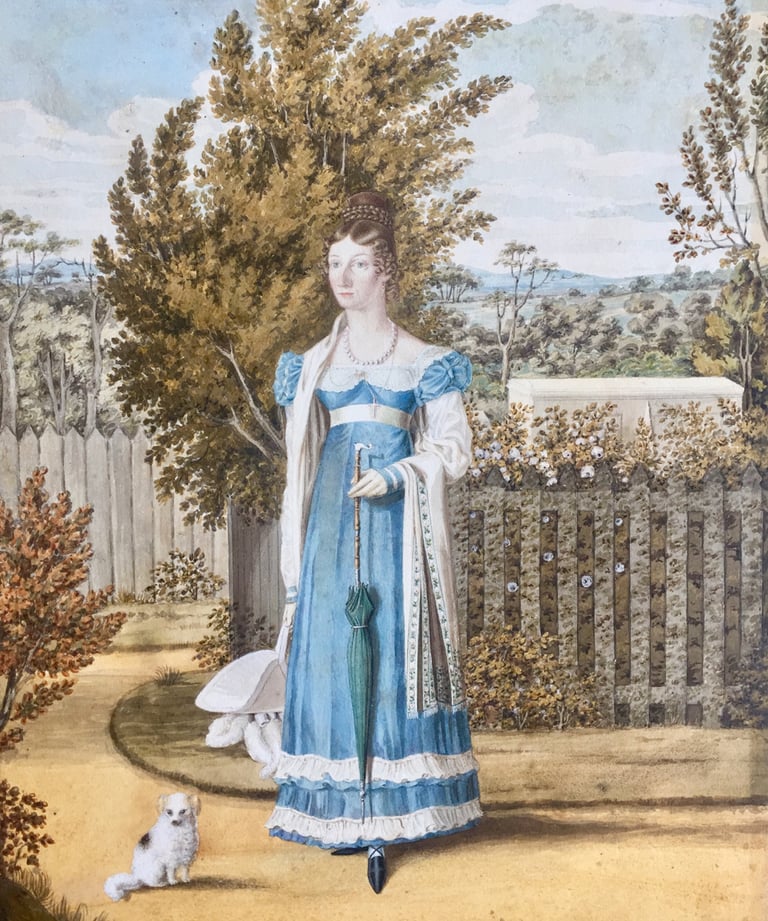

Jane’s father was the First Fleet surgeon, William Balmain, and she was the product of a long-term relationship with Dawson, his housekeeper, a detail that was no doubt unknown to the Hertfordshire gentry.
In NSW, they understood that the gentlemen kept convict women – ‘customary with all the gentlemen here’ is how one convict explained it to his mother. But the subject was never openly discussed, and (except perhaps at baptisms) the couples would not have been seen together in public, certainly not in the early years of the settlement. In the official records, these women were housekeepers, cooks or nurses; only in the privacy of personal journals were they referred to as mistresses.
It mattered that ‘a decent exterior was preserved’, so when Captain James Meredith’s ‘housekeeper’, Mary Hughes, told a court martial in 1789 that she ‘lives with Captain Meredith’, the transcript was amended to read ‘lives at Captain Meredith’s’. [2]
George Johnston (yet another marine officer) probably began his relationship with Esther Abrahams on the outward voyage, and they eventually had six children together, but they possibly did not cohabit until they moved out to their farm at Annandale. A middle-class convict, John Grant, wrote of George Johnston in 1804: 'He has a Jewess here, by whom he has 6 children, 3 of them in England for Education. She is apparently a genteel and pleasant lady'. [3]
For genteel men and women, newly arrived from England, interaction with these women was fraught with danger to reputation: Grant wrote that ‘the origin of the first Women in this colony is so obscure’. [4]
From 1796, when he was appointed principal surgeon, William Balmain lived in one of the better houses of the colony with Dawson (as she was known to Balmain and his friends), and when he went back to England in 1801, he took her and their second (surviving) child with him. (Jane had been sent ahead.) When Balmain suddenly passed away, he left his financial assets and his substantial NSW estate to his ‘dear friend’, Margaret Dawson, ‘whose tenderness to me while in ill health claims my warmest gratitude and by whom I have had two natural children. . .’
On their arrival in England, Dawson had taken the name of Henderson, which was Balmain’s mother’s maiden name – it seems likely that he was proposing to pass off their children as distant relatives, but he was obviously intending to remain with Dawson.
Balmain’s friend and fellow First Fleet surgeon, Dennis Considen, described his illegitimate daughter as his ‘niece’, even when corresponding with colleagues in NSW who understood their relationship. And when he arranged for his son to be appointed as a cadet in the East India Company’s army, he perjured himself by claiming that the boy was his nephew who had been born in Ireland.
It must have been heart-breaking for Constantine Cowley to refer to his father as his uncle, but Considen would have explained that he would never be fully accepted in English society if it were known that he was the son of a convict.
When George Johnston (by then an officer in the NSW Corps) suggested to his commanding officer, Major Francis Grose, that he might buy a commission for his eldest son George, Grose ‘was particularly averse to it on Account of his Mother’. In writing about this in 1804, Johnston added that ‘I can only say that his Mother’s Conduct has been such in this Country, that not the smallest stigma can attach to it’ – although it would be another ten years before George asked her to marry him.
It is difficult now to reconstruct the complexity and ambiguity of these relationships, and the standing of these women (and their children) in the wider community. But it is evident that many of these men felt great affection for their children, and this was one of the things that helped to break down class distinctions in this ‘world turned upside down’. This newsletter explores concepts of class in early NSW society by examining these relationships.
The Gentlemen and their Families
There were 42 officers and gentlemen on the First Fleet – 12 civil officers (including military officers assigned to civil duties), 19 marine officers and 11 naval officers (including midshipmen) not employed in civic duties on shore – and only one woman of comparable rank (Mrs Johnson, the chaplain's wife).
Seventeen (40%) of these men are known to have had children by convict women. If we exclude the naval officers who did not live on shore, then the proportion is almost half. Some of the other gentlemen might have had ongoing relationships with women which did not result in pregnancy, or children might have been born on Norfolk Island, supported by the father (and not the government stores), not baptized on their return to Port Jackson and assisted in leaving the colony shortly thereafter. By way of example – there is no evidence in the colonial records of Constantia Cowley, Dennis Considen’s eldest child – we only know of her from later correspondence.
Fifteen of the 17 women were First Fleeters, the other two arriving in June 1790 on the Lady Juliana. Their crimes were broadly representative of the female convict population as a whole – shoplifting and other forms of theft, although one was living in a house of ill repute at the time of her arrest, and another had been convicted of a prostitution-related offence.
A couple of the women were only around 17 years of age when shipped on board, but several men partnered with women who were in their late 20s. This second group of men were somewhat older themselves – Lieutenant King, 29 years of age, was the commandant of Norfolk Island, and John White, aged 31 when the fleet sailed, was the surgeon-general for the settlement. They were presumably looking for women who could manage their busy households.
Thirty-eight children have been identified from these relationships. One of these was born in England and her name and her fate are unknown, two boys and a girl passed away in early childhood, and another girl died aged 15. This leaves 33 – 16 males and 17 females – most of whom can be studied.
The Men’s Relationships with their ‘Housekeepers’
NSW is not the only colonial society where relationships can be found between men and women of (very) different backgrounds. Plantation owners and military officers in the West Indies developed affection for enslaved women, sometimes sent the children home to be educated, and sometimes made provision for them in their wills.
Dido Belle, the daughter of an enslaved woman in the West Indies, was taken home by her father, a young British naval officer, and famously raised as a (free) gentlewoman in the home of his uncle, Lord Mansfield, Chief Justice of the Court of King’s Bench.
‘Dickie’, the mixed-race son of William Croydon, a British plantation owner in Dutch Guiana, was sent to school in England, and money was left for him and his mother in one of Croydon’s wills. [6]
The same was true in India, where British and Irish officers and gentlemen supported their children by bibis (mistresses), and in some cases, sent them back to be educated. Abraham Roberts – who would eventually become a General in the East India Company’s army – had three children by an Indian woman early in his time there. They took his surname, and it was known that they were his children: Roberts continued to assist them and their mother financially, tried to sort out their problems, and left allowances for them in his will. As late as the 1840s, he corresponded with his wife then in England, complaining about the difficulties that he was having with one of them. [7]
Two of Australia’s First Fleet gentlemen remained in the colony and eventually married their partners – George Johnston to Esther Abrahams, and the surgeon, Thomas Arndell to Elizabeth Dalton/Burleigh. As noted above, William Balmain took Dawson and the children home and was apparently intending to stay with them.
Five of the women stayed in the colony and married some other man, in each case a free settler or a convict with prospects. Rachel Turner married Thomas Moore, a retired ship’s officer who became the government boat-builder: they lived in one of the finest houses in town. They were regarded as highly respectable and John White, her former partner, encouraged their son to write to his mother in NSW. Thomas and Rachel Moore were a great match: a picture of her appears on the wall in a painting of her husband, confirming how much she was loved.
Ann Inett, who had been Lieutenant Philip Gidley King’s partner, married a life sentence convict who was later pardoned and appointed as the Overseer of Government Mills in King’s time as Governor. Elizabeth Barnes, who had a child by midshipman Henry Waterhouse, married Thomas Smyth, a former seaman who had recently been appointed as the government storekeeper at Sydney.
These women were chosen by the officers in part because they were well behaved and, by the standards of a penal society, ‘respectable’ (there is direct evidence of this with Ann Inett). But having established a relationship with one of the gentlemen, they were able to maintain an elevated social standing thereafter.
In early April 1791, shortly after the officers and men of the Sirius sailed for home on the Waaksamheyd, Governor Phillip issued a General Order that no one would be permitted to leave the colony without having left sufficient security for the support of any wives and children. [9] But there also seems to have been a convention that the gentlemen would make some kind of financial arrangement for their families.
When John White left the colony in December 1794, he transferred his investment in a Rum Corps venture to Rachel Turner and their son. Ann Inett was given a government land grant that same year, and Ann Cowley, Dennis Considen’s mistress, benefited from a grant three years later. (Grants to women in their own right were rare.) David Collins, who had been the Judge Advocate and the Governor’s official secretary, transferred one of his NSW properties to Nancy Yeats, who was bringing up their children.
Two of the women (at least) left the colony. Mary Harrison took her two girls to India shortly after her time expired, suggesting that she had financial assistance from John Long, a marine lieutenant. And Lieutenant James Furzer’s partner, Ann Parsley, returned to England and married, re-establishing the relationship with her son.
But another five disappear from the colonial records around the same time that the fathers went home, suggesting that they might also have had assistance in leaving NSW. Two seem to have remained, but their fate is unknown.
The Fathers’ Relationships with their Children
A great deal has been discovered about the relationships of these men with their sons and daughters, although we don’t know as much as we would like. Most made arrangements for their children’s education and otherwise assisted them in getting ahead, even though, for some of them, this involved considerable sacrifice. Dennis Considen continued to support his son and daughter while he was on half pay and living in Edinburgh, studying to become a physician. After all his years in the colony, Philip Gidley King was not financially well off, which helps to explain why he left nothing in his will for his illegitimate sons. And yet he paid for their education and found them positions as ‘first class volunteers’ in the Royal Navy (the starting place for becoming an officer).
Public Acknowledgement
A number of these ‘natural born sons and daughters’ were openly acknowledged by their fathers throughout their lives. The 1810 wedding notice for Anna Maria Ball (in England) described her as the ‘only daughter of Capt. H. L. Ball, Royal Navy’. John White left his estate to ‘my Son Andrew Douglas White Esquire Captain in the Royal Engineers’. Douglas (as he was known) twice attended a ‘drawing room’ with the King at Buckingham Palace before returning to NSW, where he participated in several vice-regal levees celebrating the King’s birthday.
In Sydney King’s application for promotion to the rank of Lieutenant in the Royal Navy, the First Fleet chaplain, Richard Johnson, recalled that he had baptised King, ‘the Son of Phillip [sic] Gidley King, Esq., then Governor [sic] of Norfolk Island’. A quick check on his date of birth would have established that he was illegitimate.
When David Collins returned as Lieutenant Governor of the proposed new colony at Port Phillip and then in Van Diemen’s Land, he was open about his relationship with Marianne and George Collins, his children by Nancy Yeats, and assisted George in getting an appointment as midshipman on a naval vessel stationed at Port Jackson.
All of George Johnston’s and Thomas Arndell’s children were proudly identified as such. When the Johnstons’ eldest son, George Jr., died from a horse-riding accident in 1820, the funeral was attended by ‘almost every person of rank or consideration in the colony’, including the Governor and his staff.
And when their youngest daughter, Blanche Weston, passed away at Horsley Park in 1904 at the age of 98, she was described as ‘a treasured link with the historic past’, the daughter of ‘an officer who features prominently in Australian history in connection with the arrest of Governor Bligh’. The papers did not mention her mother, but old timers were fully aware of her origins.
Dido Bell and her cousin Lady Elizabeth Murray. [5]
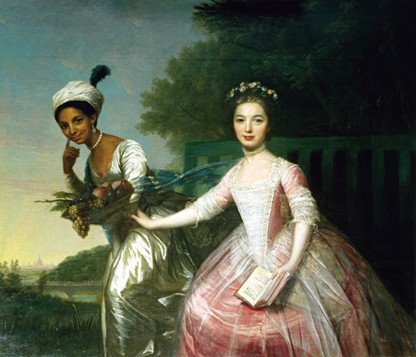

Detail of Thomas Moore, showing the picture of Rachel behind [8]
Surnames
Of the 37 children for whom we have names, at least 17 (46%) were given their father’s surname, indicating that from the outset, they were acknowledged as their flesh and blood. Of the 11 whose surnames at baptism are unknown (because they were not baptised or the records are missing), nine were almost certainly given their fathers’ name, since older siblings were. If we include these nine, then 70% of the children carried their father’s name.
This contrasts with six (23%) who were given their mother’s name (although the father was always identified in the parish register). Of these, two were later known by their father’s name. One boy, Sydney King Inett, was given both his parents’ surnames: for most of his early years in England, he was known by his father’s name, but on marrying, he took his mother’s surname once again, thereafter signing himself, ‘Sydney Inett King’.
Several of the men were insistent that the children should have their surname. Thus, with the baptism of James Meredith’s first child, the clerk entered the mother’s surname – this was then crossed out and Meredith’s name written above. The same happened with Robert Kellow’s first child.
Ongoing Assistance
Something is known about the later life of 14 of the boys, and it is clear that most of them were actively assisted. Five joined the Royal Navy: one became a Captain, another a Commander and three Lieutenants (two of whom died young and did not have an opportunity of promotion).
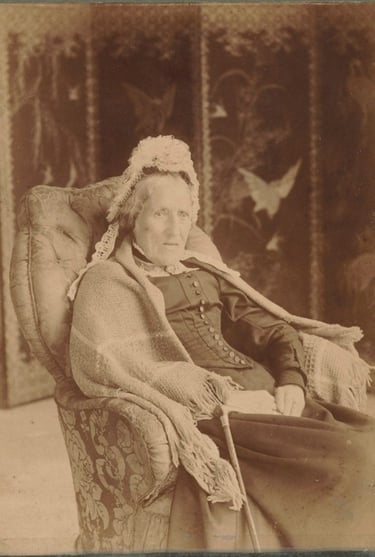

Richard Read Sr, Julia Johnston in 1824 [1]
Wood End, Great Marlow, Hertfordshire
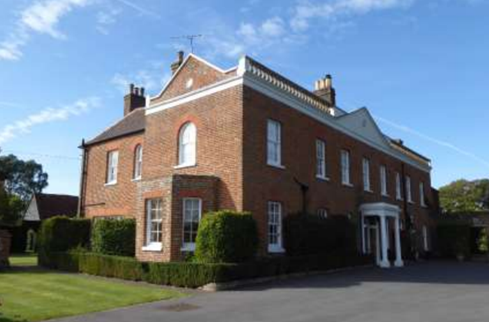

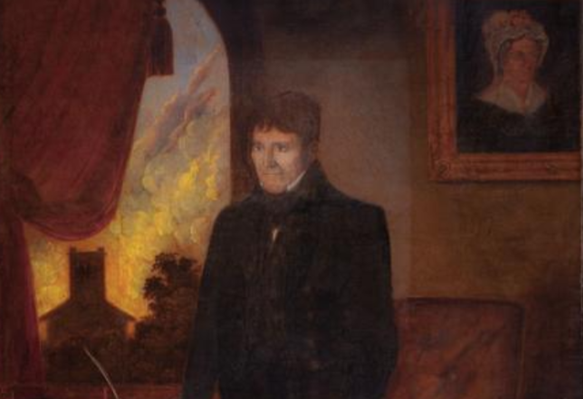

Blanche Weston, (née Johnston), c.1902 [10]
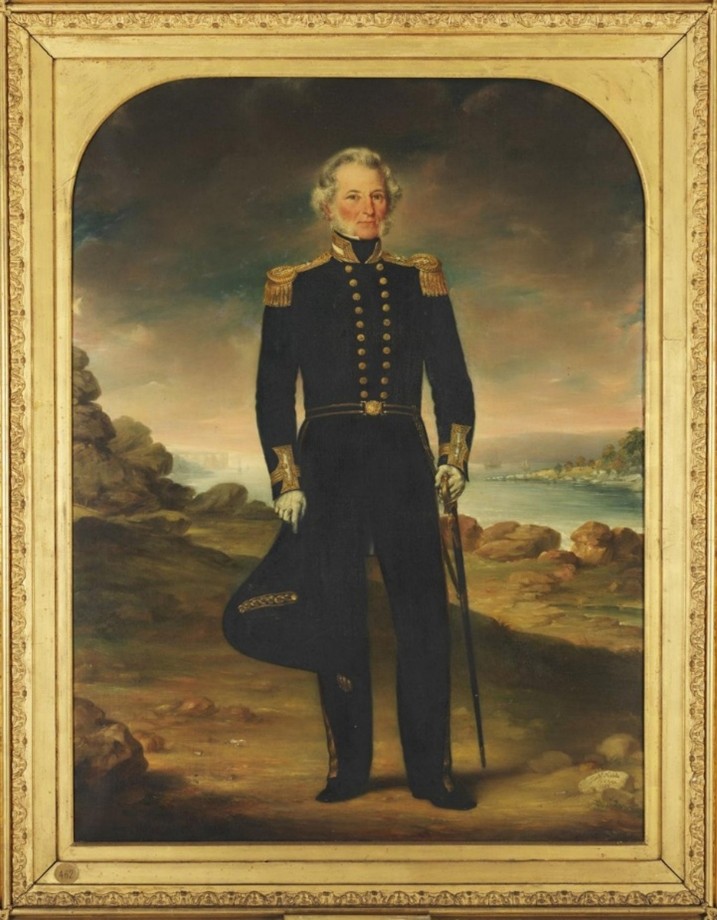

Commander Robert Johnston, RN [11]
Others ended up as – a Major in the East India Company’s service, a Captain in the Royal Engineers, a Captain in the Royal Marines, and a Lieutenant in the Royal Marine Artillery (the last killed in battle as a young man). All of these young men were sent to school by their fathers and then assisted in finding a respectable position in the military.
Balmain’s son followed his father in becoming a surgeon: he had been a child when his father died, but the estate that was left to his mother undoubtedly assisted.
George Johnston Jr. had begun a career as a public servant in the NSW government, ‘and had thereby acquired a very distinguished estimation with His Excellency’. Three other boys became substantial property owners in the colony, inheriting from their fathers and mothers, as well as receiving grants in their own right.
We know something about all but three of the girls. Constantia Cowley, Jane Henderson, Maria Waterhouse and Julia Johnston were sent ‘home’ to school in England. The younger Johnston children were educated by tutors. We know that the Arndell girls were literate because they corresponded with one another in later years, and the youngest, Frances, published poetry.
Two of these women, Maria Waterhouse and Julia Johnston, never married, and continued to live (in some luxury) with siblings or with members of their father’s extended family. (The painting on the front page of this newsletter is of Julia Johnston, who was given property by her father.)
Because they were seen as belonging to the elite of colonial society, those who remained in NSW generally married well. For Maria Johnston, it was a lieutenant in the army (they both died young); for her sister Blanche, a lieutenant in the East India Company’s service (who retired and managed their extensive property, Horsley, to the west of Sydney, inherited from her father).
Of the four Arndell girls – Elizabeth married a Sydney merchant who was appointed the Naval Officer at Hobart and a Justice of the Peace; Mary - the Assistant Inspector of Public Works at Hobart, who went on to become the Superintendent of Convicts; Sarah - the Reverend Lancelot Threlkeld, a minister and at one time, missionary to the indigenous peoples of NSW; and Frances - a lieutenant in the army who was also appointed as Superintendent of Convicts at Hobart and later a Police Magistrate.
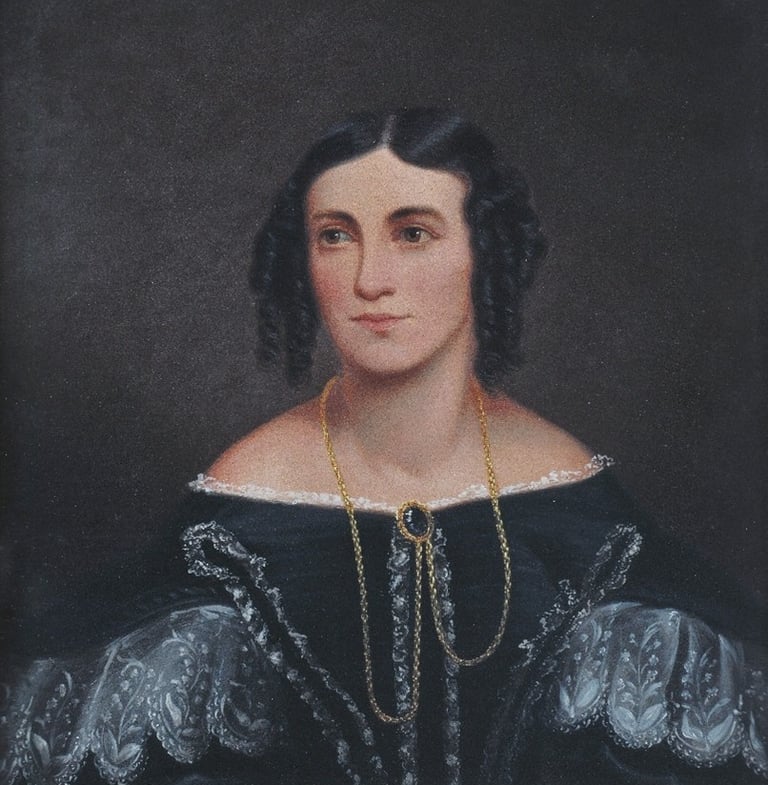

Frances Gunn (née Arndell) [12]
A number of those who left the colony also did well. Anna Maria Ball married a lawyer from Grays Inn (who went on to become a military adventurer in America); Johanna Long, an ensign in the East India Company’s service, who was promoted to lieutenant and appointed as Assistant Professor of Persian and Arabic Languages at the College of Fort William (before dying early); Jane Henderson (Balmain’s daughter), a land agent and surveyor, who was later appointed a magistrate; Constantia Cowley, a wealthy widower from Hertford who, after her death, would be appointed as a Deputy Lieutenant of that county.
Documentary Sources
For several of these relationships, we have narrative detail which reveals much more about the love of these men for their children.
Henry Waterhouse’s daughter by Elizabeth Barnes was baptized in June 1791 under the name ‘Maria Waterhouse’, three months after he had sailed for home. When he returned to the colony in September 1795, Barnes was dead and Maria, now four and a half years old, was being cared for by her stepfather, Thomas Smyth. They had become quite attached to one another.
Waterhouse was smitten by his daughter, naming his property, ‘Maria’s Farm’, and writing to his father a month after his return to the colony that he proposed sending her home to be educated.
'I send you many kisses from little Maria who says she will go to & love her papa mama, Brothers & Sisters in England because they have sent her out so many pretty things, hope to God you will yet see her, I think she would gain your affection as she has mine.' [13]
We get a glimpse of their homelife in this passage from a letter to his father written in December of that year:
'Maria is very well, now with me, playing about, making a great noise, & according to the custom of the country beging to pick the handkerchief out of my pocket already.' [14]
He took her to the Cape in 1796, and Major William Paterson and his wife took her the rest of the way: she was welcomed into the Waterhouse family, and Henry always inquired about her in his letters home.
Waterhouse’s father had been in service to the Duke of Cumberland (the King’s younger brother), so it is unsurprising that when Henry first wrote to his father about Maria going home, he suggested: ‘she might be kept at school, as much as possible without knowledge of her birth till a proper time, as it will never do much credit to either. . .’
Aged six, Douglas White was sent home to England in 1800 on the Reliance, under the protection of Henry Waterhouse, and he was initially cared for by Waterhouse’s sister Betsy. He was packed off to a boarding school but routinely holidayed with his father.
George Johnston missed the three children he had had taken to England to be educated and arranged for his sons to be brought back prematurely. When the ship he had organised for them came into the harbour, he went down to the wharf to greet them and was distraught when he discovered that they had been kept back by the gentlemen managing their affairs in England.
The Children’s Relationships with their English Stepmothers
It would be surprising if these children did not have difficult relationships with their stepmothers. Philip Gidley King married a cousin, Anna Josepha Coombe, on his return to England in 1791: she accompanied him when he went back to Norfolk Island later that year and would have been well aware of Norfolk and Sydney, his two sons by Ann Inett. King sent the boys home to school and assisted with their naval careers, but they did not enjoy the same opportunities for advancement in the Royal Navy as his legitimate son, Phillip Parker King.
In a will made towards the end of his life, Sydney King declared himself to be ‘the natural son of the late Governor Philip Gidley King of New South Wales’, which is undoubtedly how he had introduced himself throughout his life. There is no mention of Sydney or Norfolk King in their father’s will, although their existence is implicitly acknowledged in the references to his ‘dearly beloved legitimate children’ (emphasis added).
Marine lieutenant John Poulden married after he went home, but the relationship between his wife Hester and his ‘natural born’ son, John Mitchel, appears to have been awkward. When Poulden prepared his will in October 1807, shortly before his death, he described young Mitchel, then 17 years of age, as his ‘protégé’ and recommended the boy to Hester’s protection, ‘should his conduct deserve it’.
James Patrick Furzer, son of late marine lieutenant James Furzer, became a lieutenant in the Royal Marine Artillery and was killed in action in 1814. He left the bulk of his estate to his birth mother, Ann Parsley, then known as Ann Morrison and living in London. He added, as an afterthought:
'. . . it would be ungrateful of me to forget the name of Anne Furzer, Wife now Widow of my late father - under her eye I received the rudiments of an Education which has not been by any means trifling, by her care I kept through Infancy and often has her advice assisted me now when arrived at years of discretion.' [15]
The Children’s Relationships with their Birth Mothers
For boys and girls shipped off to England at a young age, the relationship with their mothers would have been distant: this practice was common throughout the Empire, but that did not make it any less difficult for those involved.
There is no evidence that Esther Abrahams wrote to her three eldest children while they were at school in England (although she was literate, at least to some extent). But several of George Johnston’s letters have survived, revealing that he missed them terribly. (It was probably for that reason that a tutor was hired to educate the other children at home.) Robert was seven when he left the colony, and Esther did not see him again until he was 23 years of age.
Douglas White was sent back to England, but (as noted above) his father often encouraged the boy to write to his mother. As a grown man, Douglas returned to the colony and spent several years with Rachel Moore (as she then was) before her demise. In his will, he left her his treasured Waterloo Medal.
Nancy Yeats and her two children sailed to England with David Collins in 1796: he was already married, so they could not have stayed together. Nancy returned to NSW with the children three years later, married and continued to raise them there. When Collins returned to Australia in 1802 and became the Lieutenant Governor at Van Diemen’s Land, he arranged for the children to spend the better part of a year with him – but in all other respects, it was Nancy who was responsible for their upbringing.
Mary Harrison took her two girls with her to Calcutta (now Kolkata) around 1793: she was a witness at their weddings in 1806 and 1811, and while she did not sign her grand-daughter’s marriage register in 1832, her husband did, which tells us (among other things) that the family remained closely connected for at least four decades. Both of Mary’s daughters eventually emigrated to Britain.
Balmain and Dawson sent their eldest daughter home to be educated around 1800, when she was only three or four years of age, although they joined her the following year. When Balmain died suddenly in 1803, he left his entire estate to Dawson and she was actively involved in raising their children. In 1814, their daughter Jane commenced legal proceedings in Chancery against their father’s executor over his failure to protect their inheritance in the colony.
Sydney King reclaimed his mother’s name shortly before he got married, and as noted above, James Patrick Furzer remained in contact with his mother and left the bulk of his estate to her when he died.
In Conclusion
We do not have sufficient information to resolve all the uncertainty about class relations in the early colony, but this brief study of the gentlemen and their housekeepers, and the children of those relationships, assists us in better understanding them.
It is evident that some convict women used these relationships to improve their standard of living (and their chances of survival), but they also seized on the opportunity to improve their social standing, establishing themselves in the upper ranks of colonial society, and making it possible for their children to be admitted into the ranks of the British gentry.
For some of the men, their relationships with their children (and in some cases, their mothers) assisted them in coming to the understanding that character was more important than breeding. Francis Grose, who spent fewer than three years in the colony and formed no such relationships, did not learn this lesson. After a decade and a half of working alongside Esther Abrahams and raising their children together, George Johnston did.
_____________
As usual, this newsletter is not fully referenced for reasons of length. Readers who are interested in tracing sources can contact the author at the email address below.
My thanks to Nichola Garvey for reminding me of Phillip’s general order in 1791 regarding the women and children left behind.
[1] Richard Read, Sr., ‘Miss Julia Johnston’, 1824, State Library of NSW (hereafter SLNSW), ML1521.
[2] The reference to preserving a decent exterior is from a report on sexual relationships on the Lord Melville – Barron Field to Lachlan Macquarie, 1 December 1817, Historical Records of Australia, Series 1, Volume 9, p. 510
[3] John Grant to his mother, 2-22 May 1804, 15 May 1804, Papers of John Grant, 1769-1810, National Library of Australia (hereafter NLA), MS737.
[4] John Grant to his mother, 13-16 July 1804, Papers of John Grant, ibid.
[5] John Martin, ‘Dido Elizabeth Belle and Lady Elizabeth Murray’, 1778, Scone Palace, Scotland.
[6] William Croydon was uncle to the second wife of Thomas King, one of the principals of Camden, Calvert & King, the contractors for Australia’s Second and Third Fleets, and he had King keep an eye out for Dickie’s welfare.
[7] Abraham Roberts’ wife was the author’s wife’s 3x great grandmother.
[8] William Griffith, ‘Portrait of the late Thomas Moore, Esq. of Liverpool’, 1840, Samuel Marsden Archives, Moore Theological College, Newtown, NSW.
[9] General Orders, Port Jackson, 4 April 1791, NSW General Standing Orders, State Library of NSW (hereafter SLNSW) Z Safe1 17B.
[10] Henry King, ‘Blanche Weston, Horsley, New South Wales’, c.1902, NLA, PIC Album 114 #PIC/11164/1.
[11] Richard Noble, ‘Commander Robert Johnston R.N.’, 1856, SLNSW, ML 462.
[12] Said to be Thomas Bock, ‘Frances Gunn’, n.d., photo from the Historical Society of Sorrell.
[13] Henry Waterhouse to his father, 24 October 1795, Letters Written by Henry Waterhouse to his father, 1788-1801; and other papers, 1782-1803, SLNSW Safe 1/187.
[14] Henry Waterhouse to his father, 21 December 1795, Letters Written by Henry Waterhouse to his father, ibid.
[15] Will of James Patrick Furzer, 8 September 1814, UK National Archives, Prob 11/1581.
Contact us
Connect with us
Botany Baymen acknowledges the traditional custodians of country throughout Australia and respects their connection to land, water and community.
© Botany Baymen 2024. All rights reserved.
You may download, display, print and reproduce this content for your personal or non-commercial use but only in an unaltered form and with the copyright acknowledged.

